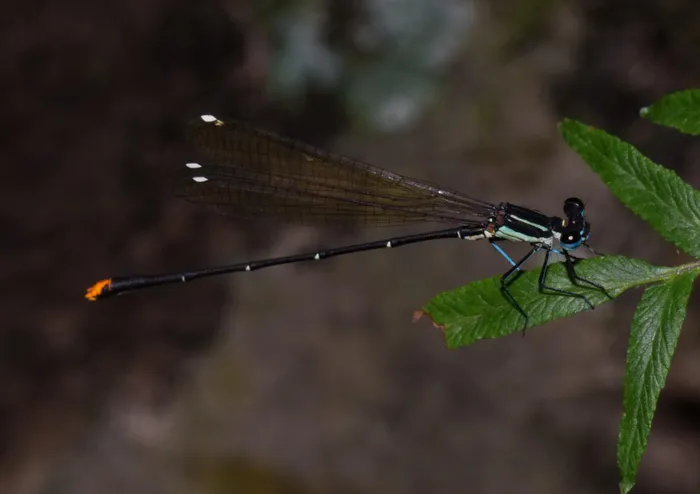Why dragonflies should be central to biodiversity conservation efforts
Dragonfly conservation

Dragonflies should be included more widely in biodiversity conservation efforts and policies, according to experts.
Image: Supplied
EXPERTS have called for dragonflies - which are natural sentinels of freshwater resources, signalling the health of aquatic ecosystems - to be included more widely in biodiversity conservation efforts and policies. They say this is necessary to ensure the long-term survival of these insects, and other creatures that share their habitats. The group of international dragonfly experts includes scientists from Stellenbosch University’s Department of Conservation Ecology and Entomology.
In a recent review* published in Insect Conservation and Diversity, they proposed a five-point action plan to promote dragonflies in freshwater and riverbank conservation:
expanding and enhancing dragonfly assessment and monitoring;
including dragonflies in standard environmental toxicological risk assessment;
learning from dragonflies to improve landscape conservation efforts;
ensuring the integration of dragonflies with other plant and animal conservation initiatives;
and promoting dragonflies in environmental education.
According to the scientists, global dragonfly conservation hing
According to the scientists, global dragonfly conservation hinges on these five actions implemented across different regions and landscapes and by various stakeholders.
“Dragonflies are a key component of freshwater and neighbouring land ecosystems. Importantly, they have been especially valuable for assessing water and land quality. Groups of dragonfly species in a defined habitat can tell us a lot about deteriorating environmental conditions and the requirements to restore degraded habitats,” they said.
The scientists said dragonflies are threatened by factors including habitat loss, landscape transformation, pollution, changes in water movement and management, and the spread of invasive alien species — all driven by human activities.
“Overarching these threats — which often interact — is the ongoing challenge of global climate change and its associated extreme weather events.”
Dragonflies could also help measure the success of conservation efforts, including the global reduction of human exploitation of wetlands through sustainable land-use practices, beaver reintroduction programmes in Europe, and habitat restoration programmes including management of highly invasive alien species.
The researchers called for continued and expanded assessment and monitoring of dragonfly population sizes - this information feeds into international conservation prioritisation frameworks and initiatives for understanding conservation risks and declines relative to human pressures and ongoing climate change.
“Monitoring and evaluation during the early stages of conservation programmes are critical to ensure that dragonfly populations, habitats and ecosystems are effectively assessed over time. This approach also helps to quantify threats and measure the level of conservation success. Information gathered through assessment and monitoring must be translated into practical conservation efforts and policy decisions.
“By including dragonflies in broader conservation initiatives, conservation policies and management globally will become more effective. We need policies that focus on overall biodiversity protection, with dragonflies being an important component.”
Local expertise
The scientists said building a solid base of knowledge and enhancing local expertise is key to understanding dragonflies better and improving conservation efforts.
“Updating regional species lists and developing field guides and digital applications help with species identification. These resources also have great potential to develop knowledge on how they live in ecosystems and interact with plants and animals they share these ecosystems with.”
Dragonflies are iconic and charismatic, adding to their appeal in environmental education across multiple age and racial groups, the scientists say. They emphasise the value of citizen science in enhancing research on conservation and management requirements.
“Understanding the cultural role of dragonflies across various regions, will, in turn, spark interest in them, encourage a desire to protect them, and feed into policymaking.
*This review was done in collaboration between scientists from South Africa, Mexico, Portugal, Australia, The Netherlands, Brazil, the United States of America, Germany, Spain, Belgium, Czechia, Japan, the United Kingdom, Canada, Argentina, Colombia, and Sweden.